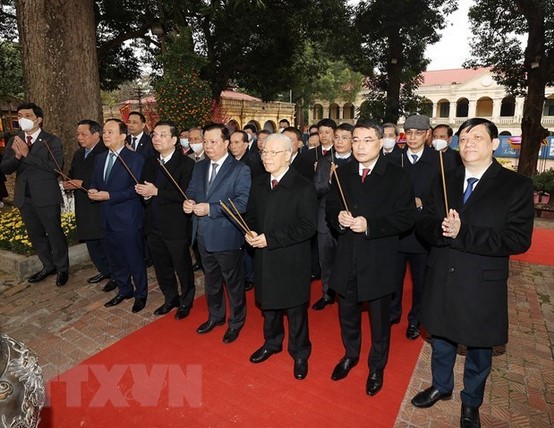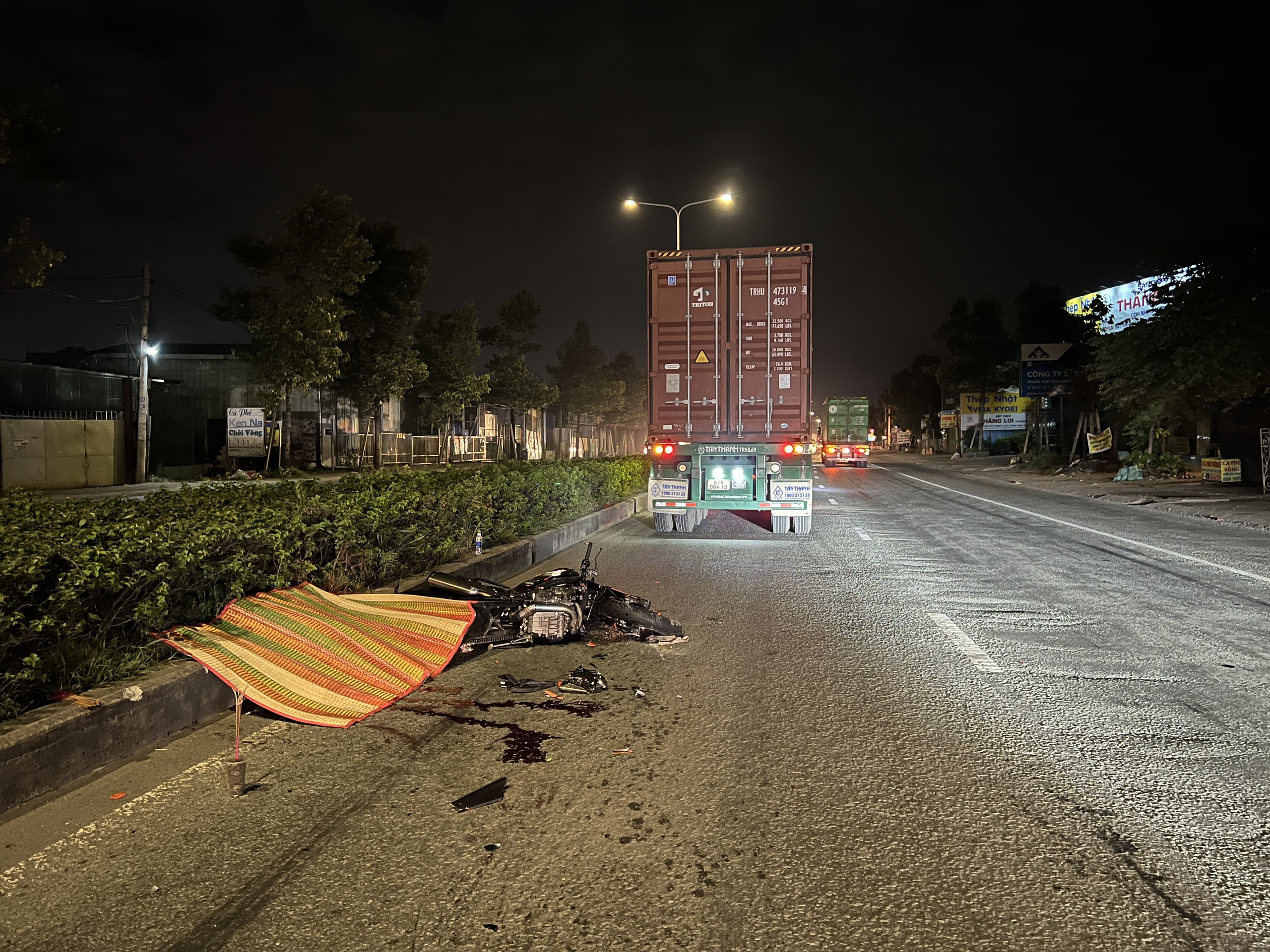您现在的位置是:88Point > La liga
【ket qua tran bi】Parader offers incense at Thăng Long Royal Citadel
88Point2025-01-10 00:29:47【La liga】5人已围观
简介Party leader offers incense at Thăng Long Royal CitadelFebruary 04, 2022 - 15:12 ket qua tran bi
Parader offers incense at Thăng Long Royal Citadel
February 04,ket qua tran bi 2022 - 15:12Party General Secretary Nguyễn Phú Trọng offered incense in tribute to the late kings and talented persons who had made contributions to the nation at Kính Thiên Palace in the Thăng Long Imperial Citadel in Hà Nội on Friday, the fourth day of the Lunar New Year.
 |
| Party General Secretary Nguyễn Phú Trọng (front row, third from right) and other officials offer incense at Kính Thiên Palace in the Thăng Long Imperial Citadel in Hà Nội on Friday. VNA Photo |
HÀ NỘI– Party General Secretary Nguyễn Phú Trọng offered incense in tribute to the late kings and talented persons who had made contributions to the nation at Kính Thiên Palace in the Thăng Long Imperial Citadel in Hà Nội on Friday, the fourth day of the Lunar New Year.
The Parader affirmed the resolve to uphold Vietnamese traditional values and strengthen the great national unity bloc to build a nation of wealth, democracy, equality and civilisation.
Talking with the staff of the relic site, he urged them to work harder to preserve and promote values of the UNESCO-recognised citadel to international friends and contribute to educating young generations about national traditions.
The Thăng Long Imperial Citadel, which was placed on the UNESCO list in August 2010, was a power centre for over a thousand years of Vietnamese history and unique evidence of Vietnamese civilisation during the development of monarchies in Southeast Asia and East Asia.
Kính Thiên Palace is the main building in the central sector of the citadel, located in what is today downtown Hà Nội. It sits in the centre of the complex, facing Đoan Môn (the south gate) and the Flag Tower.
The palace was built in 1428 and is believed to be of the highest importance, hosting many royal ceremonies. It was also the place where royals were invited to discuss national issues.
It was almost destroyed at the end of the 19th century by the French colonialists, however, and all that remains today is a 100-cm-high bannister to the south of the plot and several large stone steps with dragon carvings. VNA
很赞哦!(8)
相关文章
- Hải quan Lạng Sơn nỗ lực vì mục tiêu nâng cao năng lực thông quan hàng hóa
- Giải cờ Vua TP.Thủ Dầu Một năm 2023: CLB Kiện tướng trẻ tương lai vô địch
- Phú Yên có 20,5 ha đất chưa cho thuê lại tại các khu công nghiệp
- Tăng tốc mở rộng, xây mới khu công nghiệp để đón nhà đầu tư
- Học hỏi từ sai lầm để trở thành phiên bản tốt hơn trong tương lai
- Đưa Bộ Pháp điển điện tử đến gần hơn đối với cá nhân, tổ chức
- Thua Bồ Đào Nha 0
- Các hầm, ga ngầm dự án đường sắt đô thị Nhổn
- Hà Nội tưởng niệm nạn nhân vụ cháy chung cư mini ở Khương Hạ
- TP.HCM tìm cách khai thác quỹ đất quanh ga metro để đầu tư 6 tuyến mới
热门文章
站长推荐

Hacker bắt đầu nhắm thẳng đến ví bitcoin

Bồ Đào Nha thua trước khi đối đầu Việt Nam

Lá phiếu kỳ vọng của cử tri lão thành trăm tuổi

Long An phát triển đô thị theo hướng bền vững

Xe mô tô phân khối lớn tông container, nam thanh niên tử vong

Giải bóng đá TP.Mới Bình Dương – Cúp Becamex IDC 2023: Xác định 16 đội dự vòng chung kết

Bộ Công an vào cuộc sau các vụ “vay nóng“: Thêm tố giác vay 35 tỷ sau 2 tháng phải trả... 200 tỷ

CMCS lên tiếng về việc giao đầu tư mở rộng cao tốc TP.HCM
友情链接
- 70 đại biểu dự Đại hội Cháu ngoan Bác Hồ TX. Bình Long
- Kết thúc kỳ thi tốt nghiệp nghiêm túc, an toàn
- Đồng Phú huy động tối đa học sinh đúng độ tuổi đến trường
- Công bố điểm sàn đại học, cao đẳng năm 2013
- Tháng 7
- Lễ kỷ niệm Ngày nhà giáo Việt Nam 20
- Tổng kết công tác phát triển Đảng trong trường học sau 15 năm
- Huyện đoàn Chơn Thành đại hội đại biểu lần thứ III
- “Con tôi tốt là do được học thầy giỏi”
- Nâng cao hiệu quả hoạt động của các trung tâm học tập cộng đồng